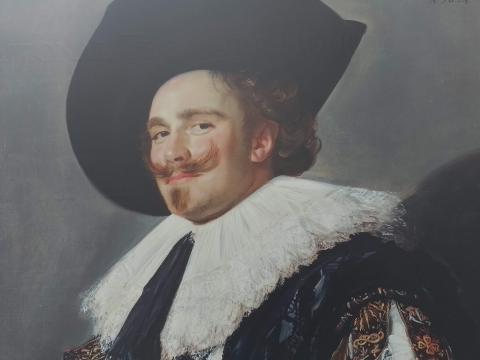The Laughing Cavalier (1624)

The Laughing Cavalier (1624) by Frans Hals is displayed in London’s Wallace Collection, which I consider to be the capital’s most impressive and best run gallery. It is one of those pictures, like Mona Lisa, which many recognise and a good number can name.
Its title is something of a mystery, chiefly because the unnamed subject is not actually laughing. Once listed as Portrait d'un Homme (‘portrait of a man’) in 1871 and The Cavalier in 1882, he was apparently laughing by 1888. The subject’s endearing smile and twinkling eyes are enhanced by his peculiar, upturned moustache. If he is not laughing, he looks as though he is about to.
Laughter and the people of God have generally been thought not to mix, especially during the time of this picture’s manufacture, when the puritans were caricatured for their gravity and solemnity. Some are surprised to learn of Oliver Cromwell’s penchant for practical jokes and how he once fell about with laughter when he witnessed a trooper with a pot stuck on his head.
Laughter can have a bad press in scripture, as well as in our own experiences, when it can be the outward expression of mockery and hedonism. Yet laughter is essentially good, and well befits the people of God, whose future is golden and present trials a-passing:
When the Lord brought back the captivity of Zion,
We were like those who dream.
Then our mouth was filled with laughter,
And our tongue with singing.
Then they said among the nations,
“The Lord has done great things for them.”
The Lord has done great things for us,
And we are glad. Psalm 126:1-3
- Log in to post comments


 Sunday Worship 10.45am & 6.00pm
Sunday Worship 10.45am & 6.00pm